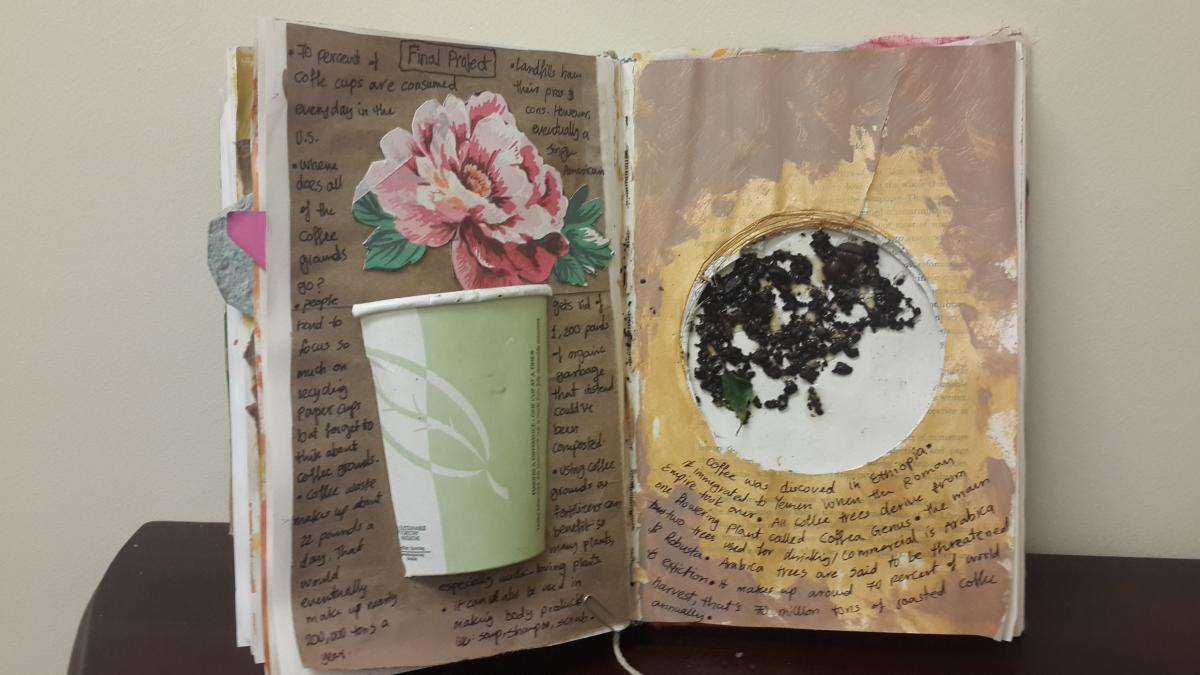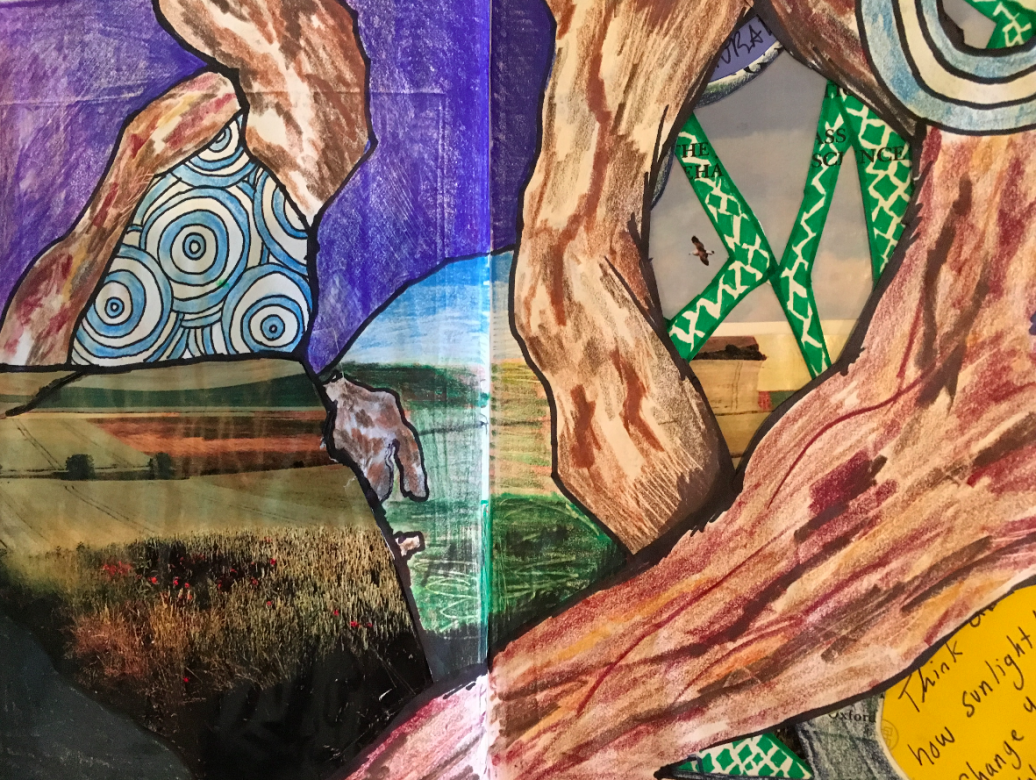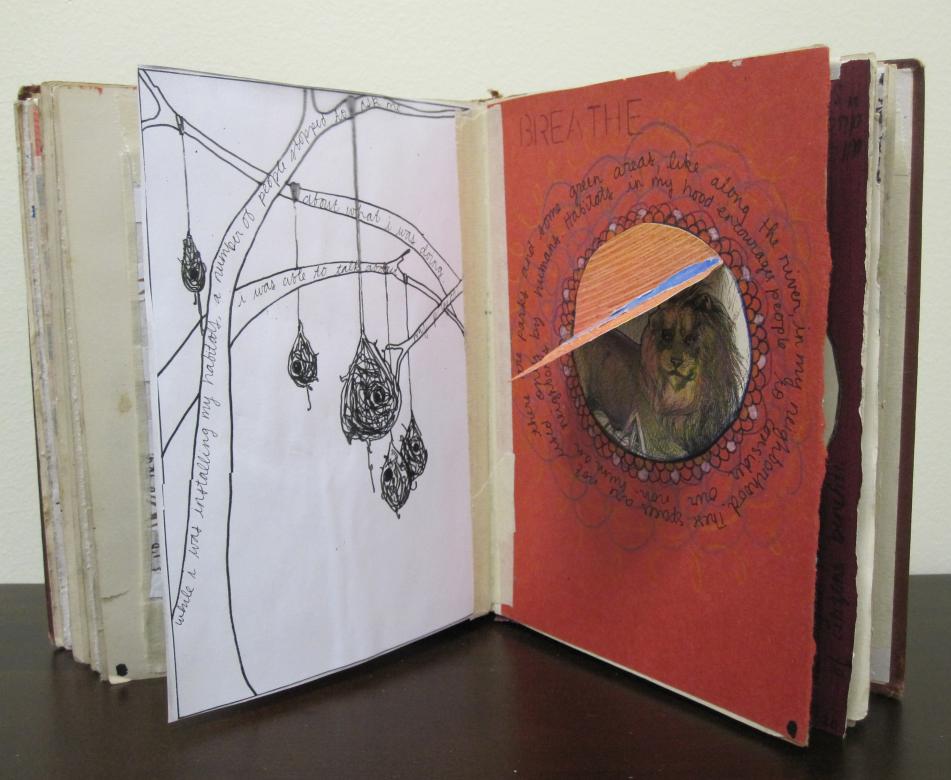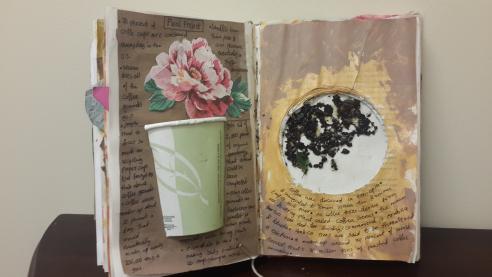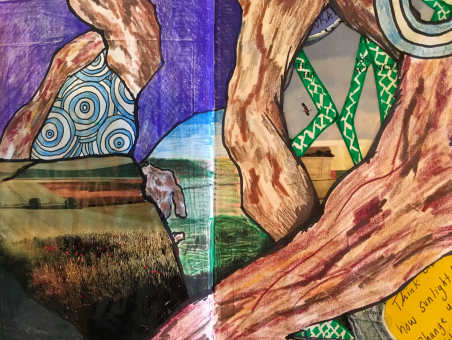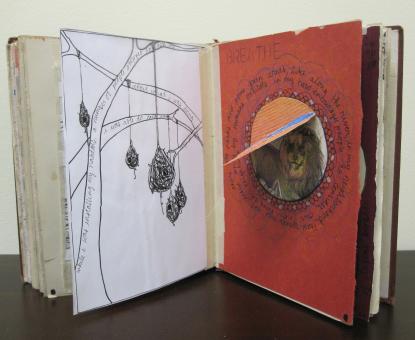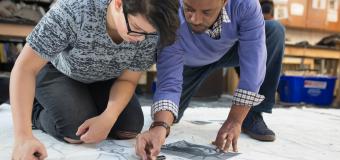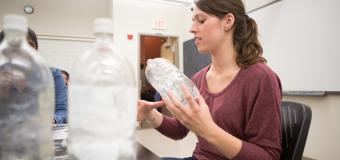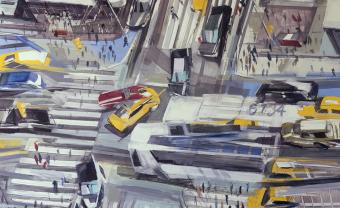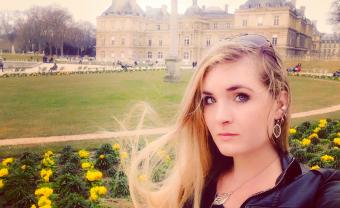Recycle, Reuse, Reflect: Altered Book Journals
In Professor Young Song's graduate Environmental Arts and Education class, here's what students are asked to do: 1. Choose a book rescued from the library recycled books shelf. 2. In class and at home, add sketches, scrap paper, leaves, poems, stars, twigs, photographs, and random found materials. 3. Record your reflections on what you're learning in class into the book, in whatever way you choose.
In doing so, students create an altered book, a journal of their semester's journey in the M.Ed. in Arts, Community, and Education program course, as they learn to understand key environmental issues and how to develop an environmental education curriculum using the arts.
About the assignment, Song says, "Students without an arts background are often worried at first, especially about receiving a poor grade. I emphasize to them that when assigning grades, I focus on the quality of the written content in the journal. The artistic aspects are not graded and are purely up to them." She finds that as the course progresses, and students see each other's work, they become more motivated to express their own creativity.
"They end up paying much more attention to their surroundings to see whether there was anything that could be used as recycled materials for their altered books—on the street, at home, wherever they were."
Laura Kathrein, a recent student of the course, said of the project, "The most surprising aspect of utilizing altered books for class journaling was how much more invested I was in recording my class experience. I found myself wanting to come back to my journal and I liked that I could curate a personalized artifact that made sense for how I processed information."
Student Charlotte Huffman related that what she found most interesting about the project was "how much it helped me to process my learning, by creating visual images that corresponded with my insights and the new information I was processing." Creating the journal, she said, "helped me to process the readings and exercises in class more deeply, [and] help me understand the environmental issues we were studying."
